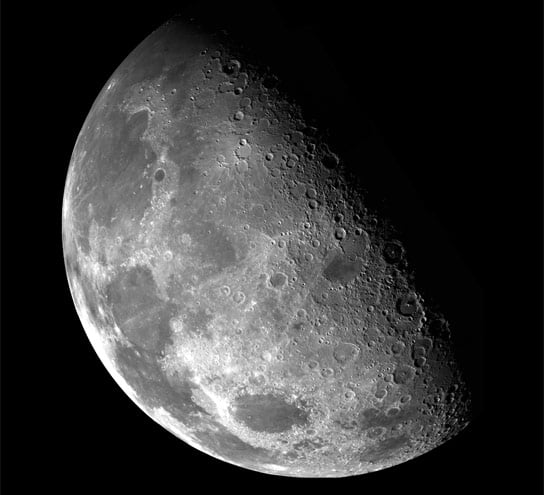
Lunar rock samples reveal evidence of a huge meteorite strike 4.2 billion years ago.
A WA geologist analyzing lunar rock samples collected during the Apollo missions has uncovered evidence of a huge meteorite strike 4.2 billion years ago.
Curtin University Associate Professor Alexander Nemchin made the discovery when he dated a section of rock from the Moon that melted in the heat of the meteorite impact.
The object that hit the Moon was probably tens of kilometers across and would have left a crater several hundred kilometers wide.
A/Prof Nemchin says the strike happened at least 300 million years before the youngest known lunar impact basins and his discovery challenges the long-held view that there was a single spike in huge impacts 3.9 billion years ago.
He says this period of intense meteorite bombardment, which would have affected both the Moon and the Earth, was previously thought to be a one-off event.
“A few years ago we started to see evidence that it’s probably not quite the case,” A/Prof Nemchin says.
“It’s possible that there are some impacts not related to this 3.9 [billion years] spike … there are some that happened much earlier.
“It has implications for a number of things including how life evolved on Earth.”
A/Prof Nemchin analyzed the moon rock using an ion probe instrument at Curtin University known as SHRIMP, which allows researchers to determine the age of tiny amounts of rock by examining the atoms that make up the sample.
He was able to borrow the rock, which was collected from the rim of North Ray crater during the Apollo 16 mission, because of NASA’s relatively open approach to the use of moon rocks for scientific research.
“All you need is to have record of doing scientific research, you need to demonstrate that you’ve got a way to keep the samples safe and you know how to work with small, rare samples,” A/Prof Nemchin says.
“It’s really very open in many ways.”
A/Prof Nemchin says currently the best explanation for any increase in meteorite impacts throughout the Solar System 3.9 billion years ago is that some planets were thought to be displaced from their normal orbits at that time.
He says the movement of Jupiter and Saturn, with their huge mass, destabilized Neptune and sent smaller asteroids and comets “randomly flying around” in the Solar System.
“Of course when they go all over the place they start hitting all the other planets,” A/Prof Nemchin says.
Never miss a breakthrough: Join the SciTechDaily newsletter.
1 Comment
They thought that all the impacts on the moon occurred at about the same time on the same time frame. BUT is may turn out that impacts may have occurred in the most logical way, some before and some after the believed bulk.
Wow, amazing that they finally have arrived at the logical conclusion that impacts on the moon occurred in a mostly RANDOM and unpredictable manner. A 10 year old kid could have arrived at that same conclusion.